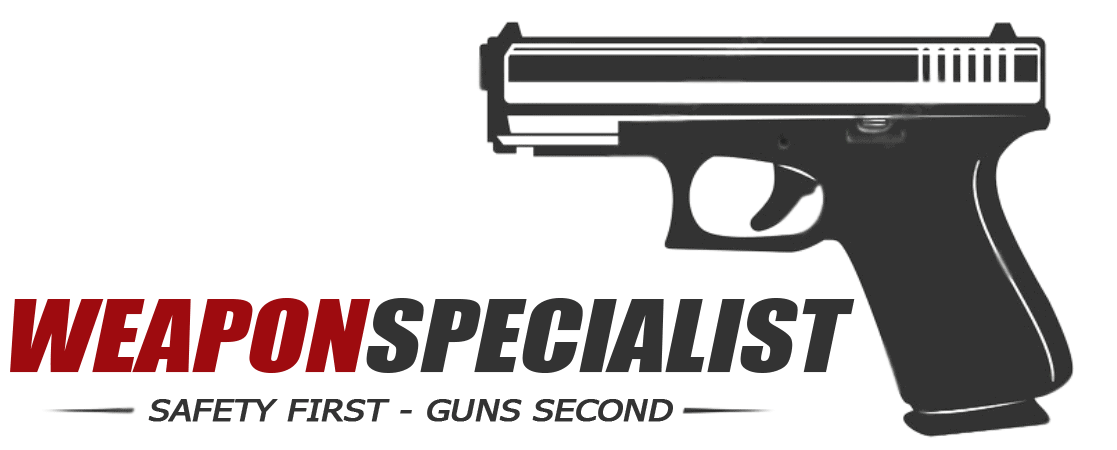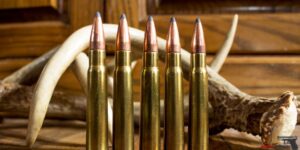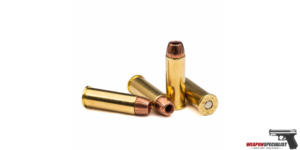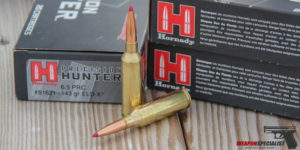As a gun enthusiast, you know that gun recoil is an inevitable part of shooting. But do you really understand what recoil is and how it affects your shooting accuracy?
In this post, I will explore the science behind recoil of a gun and share tips on how to manage it for better shooting.
What is Gun Recoil?
Gun recoil is the backward movement of a gun after firing a shot. It is caused by the force of the bullet pushing against the gunpowder gases, which in turn push the gun backward.
The amount of recoil experienced by the shooter depends on several factors, including the caliber of the gun, the weight of the gun, and the type of ammunition used.
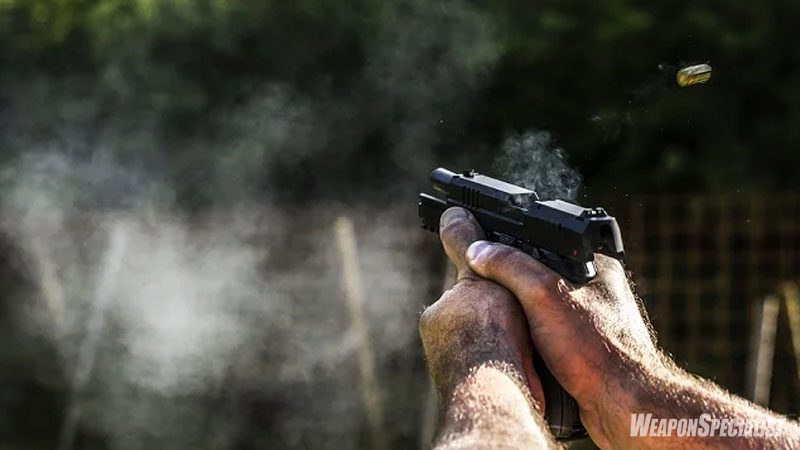
The Physics of Gun Recoil
To understand gun recoil, we need to delve into some physics. Newton’s third law of motion states that for every action, there is an equal and opposite reaction.
When a gun is fired, the bullet is propelled forward, and the gun is pushed backward with an equal force. The recoil force is measured in foot-pounds (ft-lbs) and is influenced by the weight of the bullet, the velocity of the bullet, and the weight of the gun.
How Does Gun Recoil Work?
Gun recoil is the backward movement of a gun after firing a shot. It is caused by the force of the bullet pushing against the gunpowder gases, which in turn push the gun backward.
The amount of recoil experienced by the shooter depends on several factors, including the caliber of the gun, the weight of the gun, and the type of ammunition used.
To understand gun recoil, we need to delve into some physics. Newton’s third law of motion states that for every action, there is an equal and opposite reaction. When a gun is fired, the bullet is propelled forward, and the gun is pushed backward with an equal force.
The recoil force is measured in foot-pounds (ft-lbs) and is influenced by the weight of the bullet, the velocity of the bullet, and the weight of the gun.
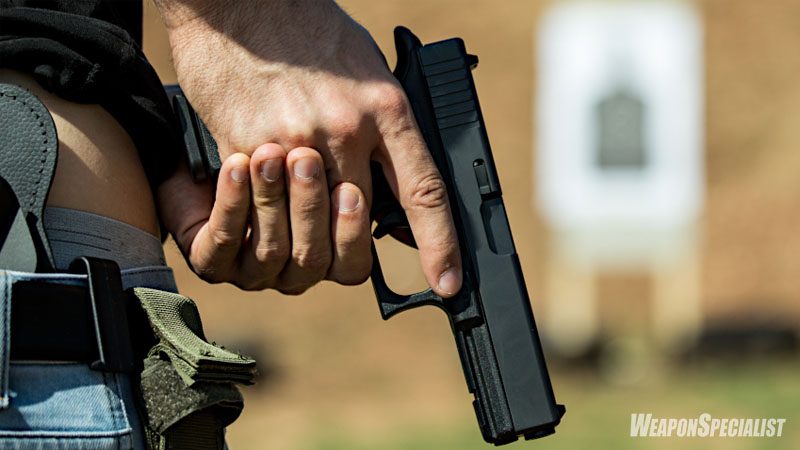
The gunpowder in the bullet casing ignites when the trigger is pulled, creating a high-pressure gas that propels the bullet forward. As the bullet moves down the barrel, it pushes against the gunpowder gases, which in turn push the gun backward.
The amount of recoil experienced by the shooter depends on the force of the gunpowder gases, which is influenced by several factors, including the caliber of the gun, the weight of the gun, and the type of ammunition used.
The recoil force is transferred to the shooter through the gun’s stock or grip. The shooter’s body absorbs the force of the recoil, which can cause discomfort or pain, especially when firing larger calibers or heavier guns.
Proper grip and stance can help reduce the impact of recoil by distributing the force of the recoil across the shooter’s body.
Factors Affecting Gun Recoil
Several factors affect the amount of recoil experienced by the shooter. These include:
- Caliber: Larger caliber guns generally produce more recoil than smaller caliber guns. This is because larger calibers use more gunpowder, which creates more force when ignited.
- Gun weight: Heavier guns tend to produce less recoil than lighter guns. This is because the weight of the gun helps absorb some of the recoil force.
- Ammunition: The type of ammunition used can affect recoil. Ammunition with higher velocity and heavier bullets tends to produce more recoil than ammunition with lower velocity and lighter bullets.
- Barrel length: Longer barrels tend to produce less recoil than shorter barrels. This is because the longer barrel provides more time for the gunpowder gases to expand and dissipate, reducing the force of the recoil.
- Grip and stance: Proper grip and stance can help reduce the impact of recoil on the shooter. The shooter should have a firm grip on the gun and stand with their feet shoulder-width apart, knees slightly bent, and weight evenly distributed between their feet.
- Gun design: The design of the gun can also affect recoil. Guns with a straight-line design tend to produce less recoil than guns with a curved design. Recoil pads can also be added to the butt of the gun to reduce the impact of recoil on the shooter’s shoulder.
How Recoil Affects Shooting Accuracy
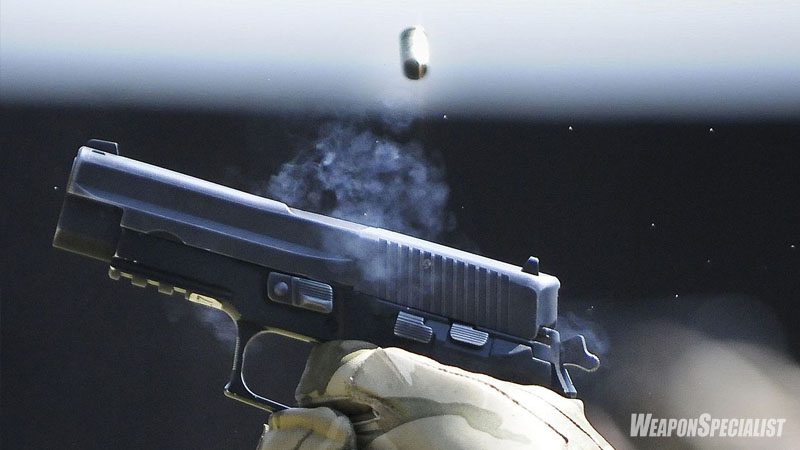
- When a gun is fired, the bullet is propelled forward, and the gun is pushed backward with an equal force. This backward movement of the gun is called recoil.
- Recoil can cause the gun to move off target, and the shooter must readjust their aim for the next shot. This can be challenging, especially for novice shooters.
- The amount of recoil experienced by the shooter depends on several factors, including the caliber of the gun, the weight of the gun, and the type of ammunition used.
- Guns with larger calibers typically have more recoil than those with smaller calibers. Heavier guns tend to have less recoil than lighter guns.
- Ammunition with higher velocity and heavier bullets tends to produce more recoil. The shooter should consider the weight and type of ammunition when selecting a gun.
- Proper grip and stance can help reduce recoil by distributing the force of the recoil across the shooter’s body. The shooter should have a firm grip on the gun and stand with their feet shoulder-width apart, knees slightly bent, and weight evenly distributed between their feet.
- Recoil can also cause flinching, where the shooter anticipates the recoil and jerks the gun just before firing, leading to inaccurate shots.
- Recoil can impact shooting accuracy, especially at longer ranges. The shooter must adjust their aim after each shot, which can be challenging and time-consuming.
- Managing recoil is essential for better shooting accuracy. The shooter should select the right gun and ammunition, develop proper grip and stance, and practice regularly to reduce the impact of recoil on their shooting.
Managing Recoil for Better Shooting
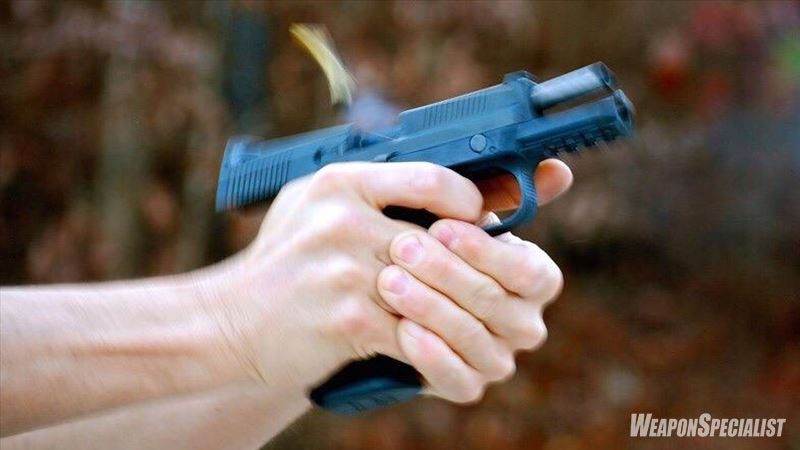
While recoil is an inevitable part of shooting, there are ways to manage it for better shooting accuracy. These include:
- Proper grip and stance: As mentioned earlier, proper grip and stance can help reduce recoil. The shooter should have a firm grip on the gun and stand with their feet shoulder-width apart, knees slightly bent, and weight evenly distributed between their feet.
- Use of recoil pads: Recoil pads are accessories that can be added to the butt of the gun to reduce the impact of recoil on the shooter’s shoulder. They come in different materials, such as rubber, gel, and foam, and can significantly reduce felt recoil.
- Choosing the right gun: When selecting a gun, consider the weight, caliber, and type of ammunition. A heavier gun with a smaller caliber and lighter ammunition will produce less recoil than a lighter gun with a larger caliber and heavier ammunition.
- Practice: Practice is essential for managing recoil. Novice shooters should start with smaller calibers and work their way up as they become more comfortable. Regular practice can also help the shooter develop a more stable grip and stance, reducing the impact of recoil.
Recoil and Safety
Recoil can also impact safety, especially when shooting at close range. The shooter should always maintain a safe distance from the target and wear appropriate safety gear, such as eye and ear protection.
When shooting with others, it is essential to maintain a safe distance and follow proper gun safety protocols.
Recoil and Gun Maintenance
Recoil can also impact the longevity of a gun. The repeated force of recoil can cause wear and tear on the gun’s components, leading to malfunctions and reduced accuracy. Regular gun maintenance, such as cleaning and lubrication, can help reduce the impact of recoil on the gun and extend its lifespan.
Conclusion
In conclusion, gun recoil is an inevitable part of shooting, but it can be managed for better accuracy and safety.
Understanding the physics of recoil and the factors that influence it can help shooters select the right gun and ammunition and develop proper grip and stance. Regular practice and the use of recoil pads can also help reduce the impact of recoil on the shooter.
Remember to always prioritize safety when shooting and maintain proper gun maintenance for optimal performance.
Last Updated on October 28, 2023 by
